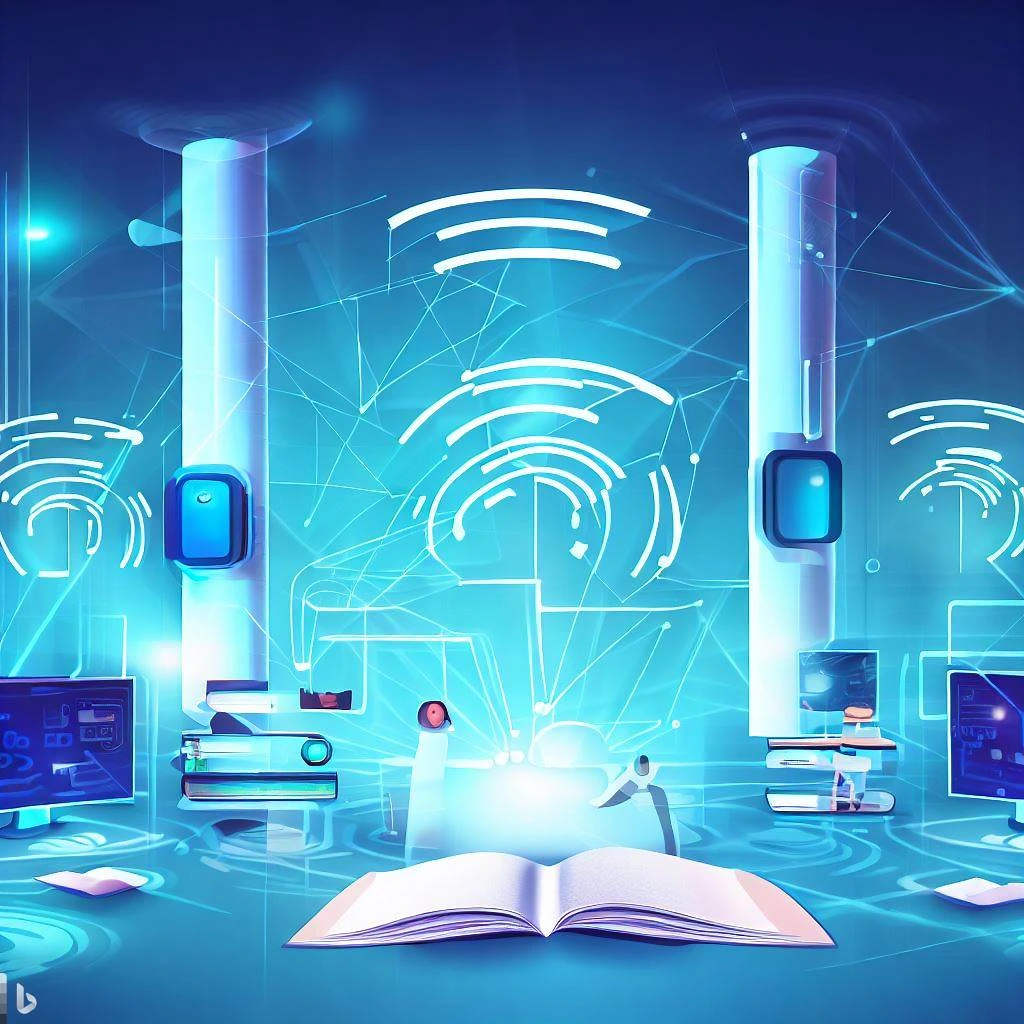- Entertainment Industry: Streaming High-Quality Content Anytime, Anywhere
- Case Study 1: Netflix's Content Delivery Network (CDN)
- Case Study 2: Music Streaming Services
- Case Study 3: Virtual Reality (VR) Gaming
- Education and E-Learning: Transforming the Learning Experience
- Case Study 1: Massive Open Online Courses (MOOCs)
- Case Study 2: Augmented Reality (AR) in Education
- Telemedicine and Healthcare: Providing Remote Medical Services
- Case Study 1: Teleconsultations and Remote Diagnostics
- Case Study 2: Remote Patient Monitoring
- Case Study 3: Health Tracking and Fitness Applications
- Conclusion
The way we interact with technology and communication has been completely transformed by wireless multimedia systems. These systems have taken the lead in modern communication by seamlessly transmitting multimedia content, such as audio, video, and data, over wireless networks. They have revolutionized the entertainment industry by allowing us to stream high-quality entertainment content anytime, anywhere, and giving us on-demand access to a sizable library of films, TV shows, and live events. Additionally, through the use of e-learning platforms and applications, wireless multimedia systems assignments have transformed the learning experience and had a significant impact on the educational field. They deliver educational materials that are multimedia-rich, encouraging student interaction and engagement while removing geographical restrictions to give everyone access to high-quality education. Wireless multimedia systems have made telemedicine, teleconsultations, and patient monitoring possible in the healthcare sector. These systems make it possible for medical professionals to deliver high-quality care wherever they are, enhancing patient outcomes and increasing access to healthcare services. Wireless multimedia systems have also transformed how we keep active and keep track of our health.

Individuals are able to track their physical activity, monitor their vital signs, and make well-informed decisions about their well-being with the help of wearable technology and fitness applications that make use of wireless connectivity. Overall, wireless multimedia systems have changed a number of industries by improving access to a variety of multimedia content and services as well as communication and interaction.
Entertainment Industry: Streaming High-Quality Content Anytime, Anywhere
Wireless multimedia systems have ushered in a new era of high-quality streaming content that can be accessed whenever and wherever in the entertainment sector. With the growth of streaming services like Netflix, Amazon Prime Video, and Disney+, users can instantly watch their preferred films, TV shows, and live events. These computer network assignment help platform uses wireless technology to seamlessly transmit multimedia data between devices, including smartphones, tablets, and smart TVs. There is no need for physical media or time-consuming downloads because of the smooth and uninterrupted viewing experience provided by this wireless transmission. Now, users can stream their preferred entertainment content while at home, on the go, or during their commute. People can now instantly access a huge library of content thanks to wireless multimedia systems, giving them access to an almost limitless variety of entertainment options. Wireless multimedia systems have changed the entertainment landscape by making high-quality content easily accessible anytime and anywhere, whether it's binge-watching the newest series, catching up on missed episodes, or taking in live sporting events.
Case Study 1: Netflix's Content Delivery Network (CDN)
The most popular streaming service in the world, Netflix, is supported by a sophisticated Content Delivery Network (CDN) that uses wireless multimedia technologies. A network of servers strategically positioned all over the world, the CDN is used to cache popular content closer to end users. The content is delivered from the closest server when a user requests to stream a movie or TV show, reducing latency and guaranteeing an uninterrupted viewing experience. Netflix is able to efficiently handle massive amounts of data traffic thanks to this wireless multimedia system, ensuring that users can enjoy their favorite content without interruptions or buffering problems.
Case Study 2: Music Streaming Services
Wireless multimedia systems are used by well-known music streaming services like Spotify and Apple Music to provide their users with a vast selection of songs. To deliver high-quality audio files to smartphones, tablets, and other devices, these services make use of wireless networks. Users can easily stream their favorite music tracks using wireless technology, creating a customized and immersive listening experience. The ability to access millions of songs instantly, make custom playlists, and discover new artists and genres has allowed these wireless multimedia systems to revolutionize the music business.
Case Study 3: Virtual Reality (VR) Gaming
In order to give users immersive gaming experiences, Virtual Reality (VR) gaming platforms like the Oculus Quest rely on wireless multimedia systems. Players can move around freely and without restrictions in virtual environments thanks to these systems that do away with the need for wired connections. Wireless technology allows for real-time interaction and responsiveness, which heightens the sense of presence and realism in VR gaming platforms. The gaming experience is made more immersive and captivating by the ability for players to interact wirelessly with characters and objects while exploring breathtaking landscapes in virtual worlds. Wireless multimedia platforms have accelerated the uptake of VR gaming by granting players a previously unthinkable level of freedom and interactivity.
Education and E-Learning: Transforming the Learning Experience
Wireless multimedia systems have fundamentally changed how students interact with and learn from educational content in the fields of education and e-learning. The traditional classroom model has been completely transformed by these systems, which have improved accessibility, engagement, and personalized learning. Students have access to multimedia-rich educational materials that combine interactive, audio, and video components to promote a deeper understanding of the subject matter through e-learning platforms and applications. Wireless connectivity eliminates geographic restrictions and provides scheduling flexibility, allowing students to learn at their own pace and from any location. These systems also make it possible for teachers and students to collaborate and communicate in real-time, enabling interactive lessons, online classrooms, and quick feedback. Massive open online courses (MOOCs) and specialized training programs can now be delivered by educational institutions and organizations thanks to the integration of wireless multimedia systems, enabling people to learn new skills and expand their knowledge. Students can interact with immersive content, access learning materials outside of traditional textbooks, and take part in interactive simulations and virtual experiments, all of which improve the learning experience. Wireless multimedia systems have significantly changed education, giving students the chance to continue learning throughout their lives and fostering a vibrant, inclusive learning environment.
Case Study 1: Massive Open Online Courses (MOOCs)
MOOCs are made available to students all over the world thanks to the utilization of wireless multimedia systems by platforms such as Coursera and edX, which provide students with access to educational material of an exceptionally high standard. Students are able to watch video lectures, take part in interactive quizzes, and participate in discussions thanks to the availability of wireless connectivity in the classroom. These systems give people the ability to pursue their educational goals from a distance, which eliminates the limitations of location and encourages learning throughout one's entire life.
Case Study 2: Augmented Reality (AR) in Education
The combination of augmented reality technology and wireless multimedia systems has made it possible to provide students with novel learning opportunities. Students are able to visualize difficult concepts, such as 3D models of molecules or historical artifacts, using their own smartphones or tablets thanks to augmented reality (AR) applications in the classroom. These wireless systems make real-time interaction with augmented content possible, which contributes to a more profound comprehension of the material being studied.
Telemedicine and Healthcare: Providing Remote Medical Services
Wireless multimedia systems have revolutionized the delivery of healthcare in the healthcare sector by enabling remote medical services. By enabling healthcare professionals to provide patients with virtual consultations, diagnostics, and treatment options regardless of their location, these systems have revolutionized telemedicine. Patients can communicate with medical staff in real time through video conferencing technology and wireless connectivity, doing away with the need for in-person visits and saving money and time on travel. Additionally, wireless multimedia systems enable remote patient monitoring, which enables wearable sensors and devices to continuously track and transmit health information to healthcare professionals via wireless networks. This enables early detection of abnormalities, prompt intervention, and proactive and remote management of chronic conditions. Additionally, wireless multimedia systems facilitate the quick exchange of test results, images, and medical records, allowing medical professionals to consult and decide together. By bridging the gap between patients and healthcare providers, these systems have increased access to healthcare services, especially in underserved and remote areas. The healthcare sector has changed how medical services are delivered by utilizing wireless multimedia systems, making healthcare more accessible, effective, and patient-centered.
Case Study 1: Teleconsultations and Remote Diagnostics
The ability to conduct remote consultations between physicians and patients is made possible by platforms for telemedicine, which rely on wireless multimedia systems. Interacting with patients, diagnosing conditions, and offering advice about medical treatment can all be accomplished through the use of technology that enables video conferencing. Wireless connectivity guarantees real-time communication, which makes healthcare more accessible to people who live in isolated areas or who have limited mobility.
Case Study 2: Remote Patient Monitoring
Additionally, wireless multimedia systems play an important part in the process of remote patient monitoring. Wearable sensors and other types of technology that connect to wireless networks have the potential to send real-time patient data to medical professionals. This makes it possible to continuously monitor vital signs like heart rate and blood pressure and enables timely interventions, even when the patient is located at a distance. The use of wireless connectivity improves patient care and allows for the earlier detection of potentially life-threatening medical events.
Case Study 3: Health Tracking and Fitness Applications
Applications for monitoring one's health and fitness are now possible thanks to the proliferation of wireless multimedia systems. Wearable electronic gadgets, such as smartwatches and fitness trackers, make use of wireless connectivity to synchronize their data with that of smartphones or cloud-based platforms. Users are able to monitor their sleep patterns, track the amount of physical activity they get, and receive personalized recommendations for improving their health. These wireless systems give individuals the ability to take charge of their own health and make educated choices about the kinds of behaviors they engage in as part of their lifestyle.
Conclusion
In conclusion, the widespread use of wireless multimedia systems has transformed a variety of industries as well as the ways in which we communicate, learn, have fun, and receive medical care. These systems have improved communication and interaction by allowing us to stream top-notch content whenever and wherever we want, encouraging interaction and engagement in the classroom, and facilitating remote medical services and teleconsultations. Wireless multimedia systems have made it possible for us to have seamless and immersive experiences in our daily lives, from Netflix's Content Delivery Network to music streaming services and virtual reality gaming. These systems have created opportunities for global learning and individualized educational paths in the field of education. Wireless multimedia healthcare systems have dismantled barriers and opened up access to high-quality care for everyone, regardless of location. Wireless multimedia systems will continue to influence the future and open up new horizons for communication, entertainment, education, and healthcare as we move forwards. We can anticipate that as technology develops further, wireless multimedia systems will become even more important in enhancing our daily lives and expanding the realm of what is practical in the digital age.
